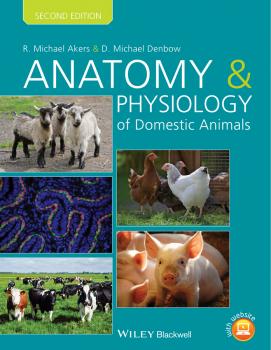ТОП просматриваемых книг сайта:
R. Akers Michael
Список книг автора R. Akers MichaelАннотация
Anatomy and Physiology of Domestic Animals, Second Edition offers a detailed introduction to the foundations of anatomy and physiology in a wide range of domestic species. Well illustrated throughout, the book provides in-depth information on the guiding principles of this key area of study for animal science students, fostering a thorough understanding of the complex make-up of domestic animals. This Second Edition includes access to supplementary material online, including images and tables available for download in PowerPoint, a test bank of questions for instructors, and self-study questions for students at www.wiley.com/go/akers/anatomy. Taking a logical systems-based approach, this new edition is fully updated and now provides more practical information, with descriptions of anatomic or physiological events in pets or domestic animals to demonstrate everyday applications. Offering greater depth of information than other books in this area, Anatomy and Physiology of Domestic Animals is an invaluable textbook for animal science students and professionals in this area.
Аннотация
Michael Akers provides the basics for understanding mammary development and lactation and conveys the critical regulatory events in lactation. This text willl prove to be an invaluable overview of mamorary development and lactation for undergraduates and graduates studying lactation, new researchers, and as a review for established scientists. Additionally, the book will be an important resource for professionals in the animal and dairy industry and for those in other scientific disciplines such as food chemistry, cell biology, and endocrinology whose work is closely tied to mammary gland development and function. Lactation and the Mammary Gland covers growth and development of the mammary gland including comparisons between species. It imparts and emphasizes the critical nature of mammary growth and the onset of lactation at the time of parturition. Special emphasis is given to the endocrine and growth factor regulation of both mammogenesis and lactogenesis. A thorough discussion of the role of growth hormone in development and maintenance of lactation or galactopoiesis adds to this book's value as a text and reference. The author reviews the presence of hormones, growth factors, and other bioactive compounds in milk and mammary secretions as well as the potential for use of the mammary gland as a bioreactor in the pharmaceutical industry. A description of the nutritional and management factors in milk production round out the book's comprehensive coverage.


